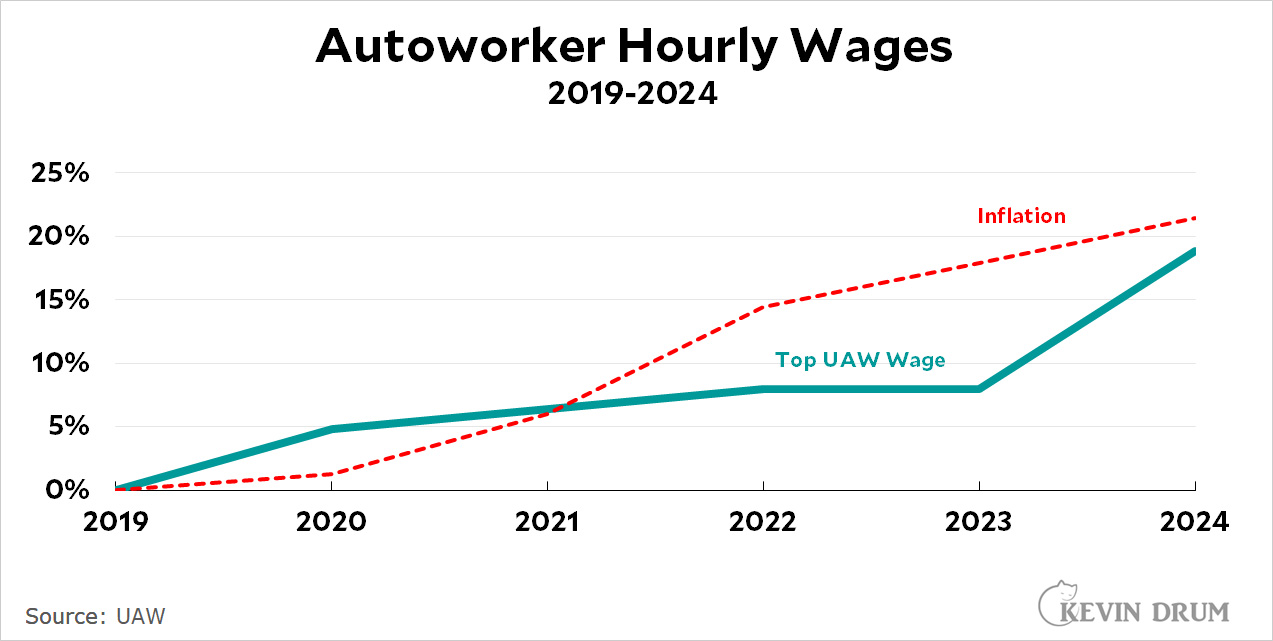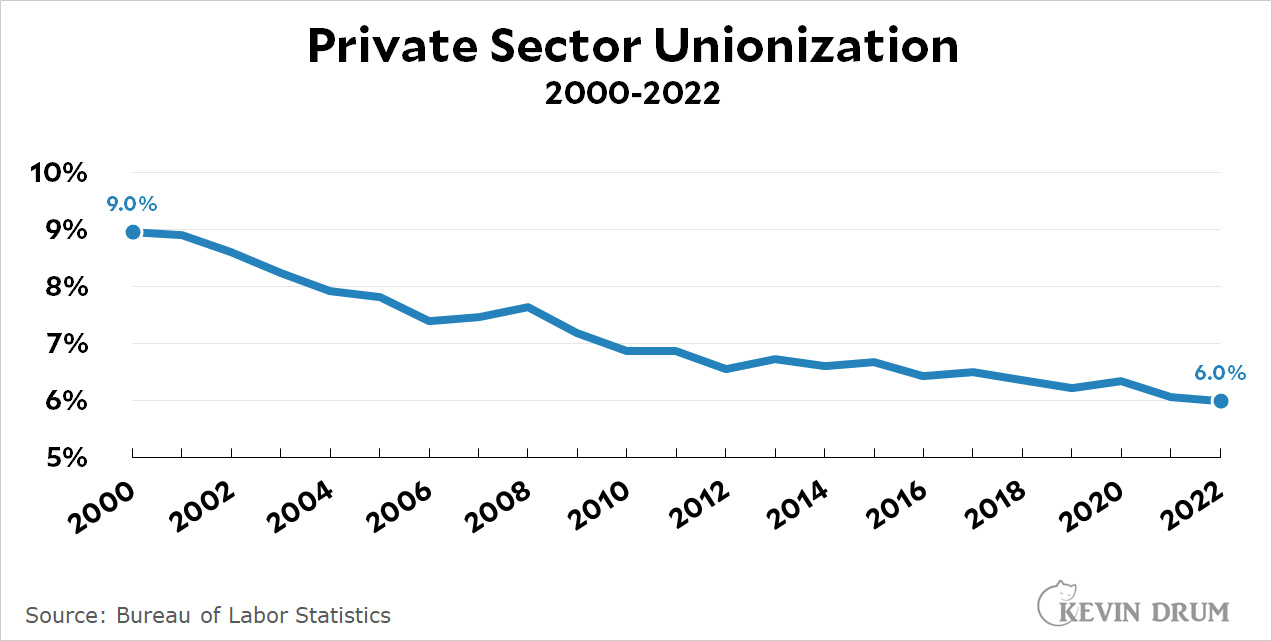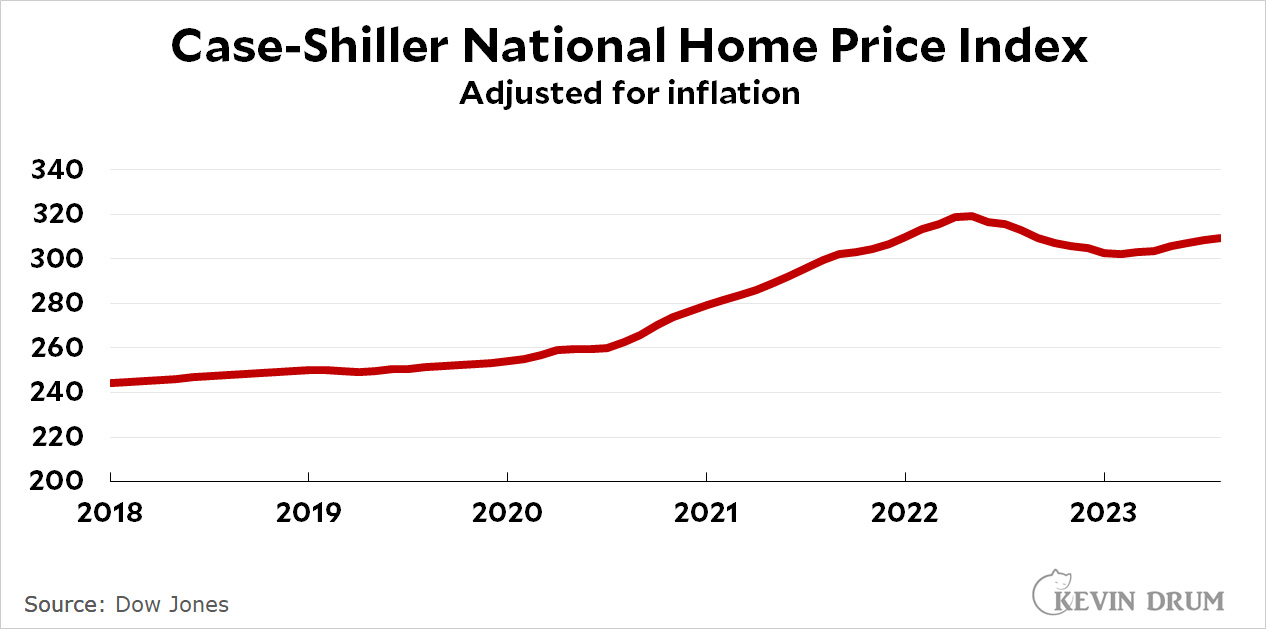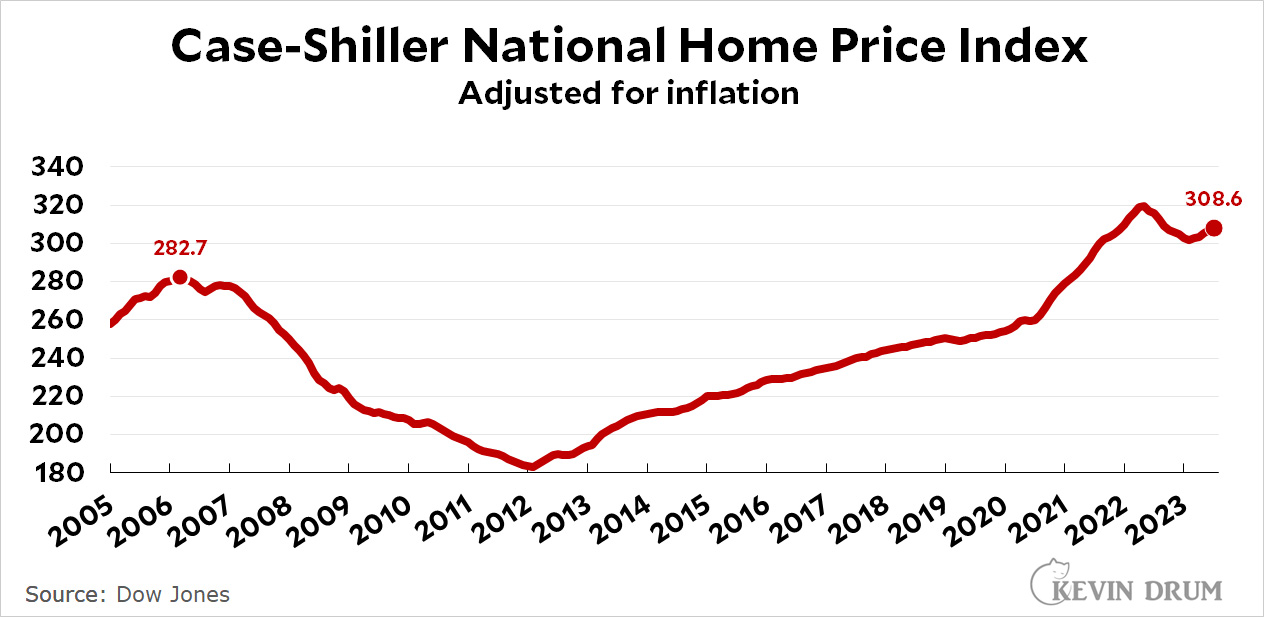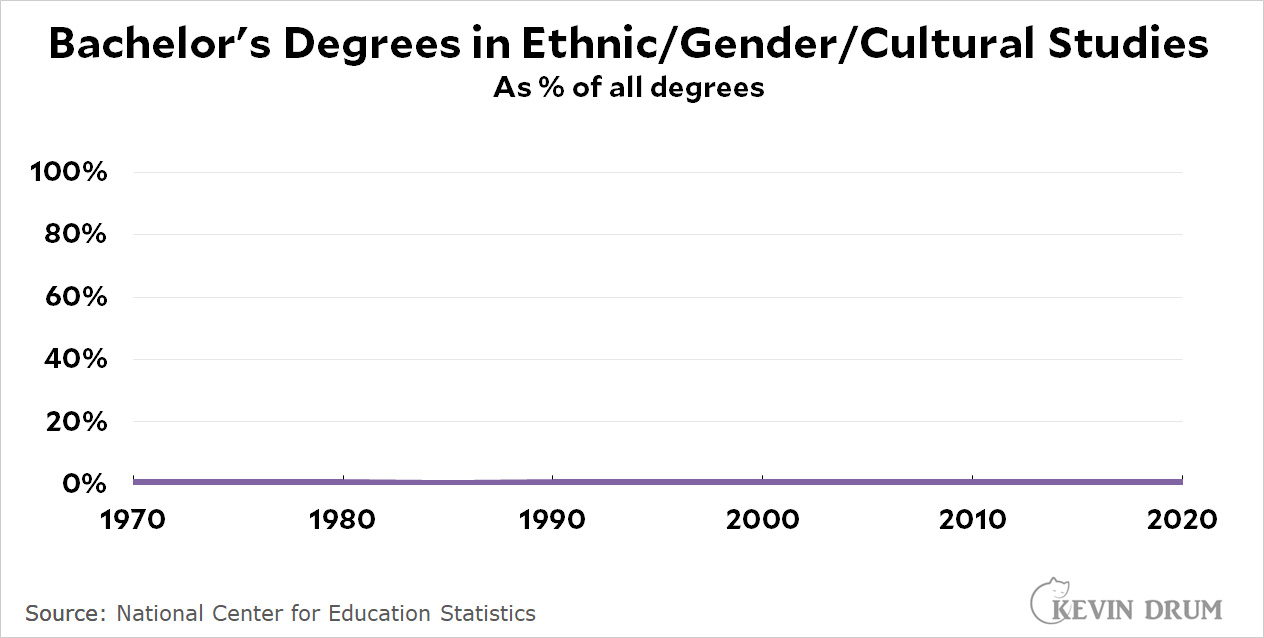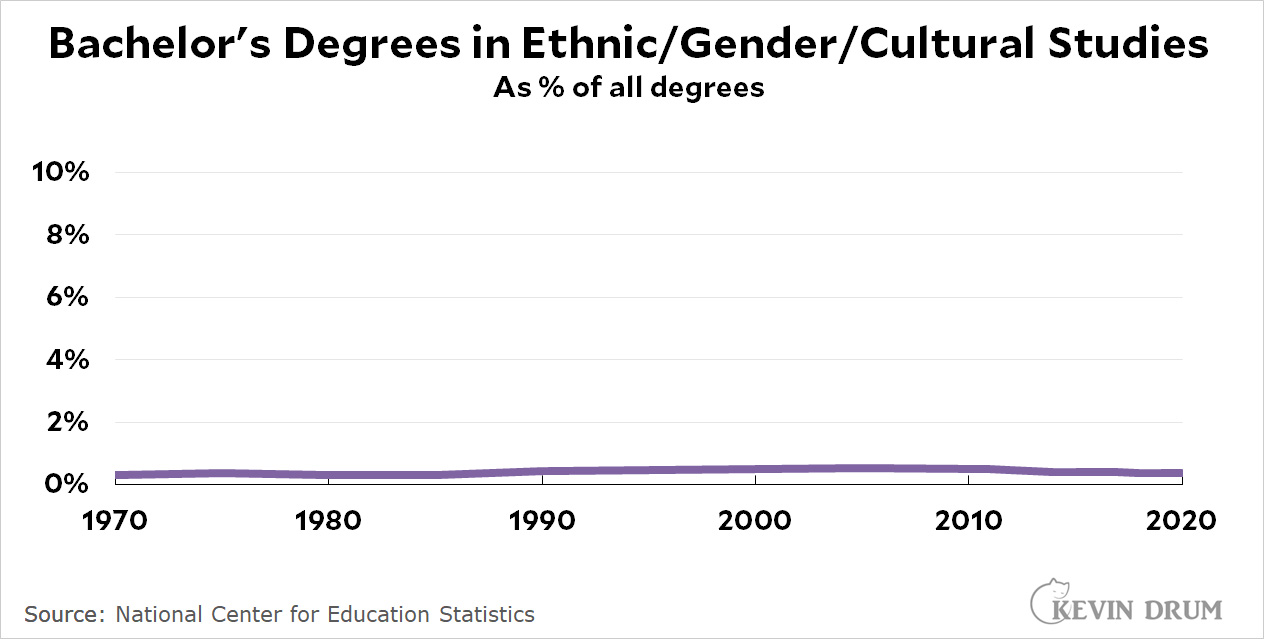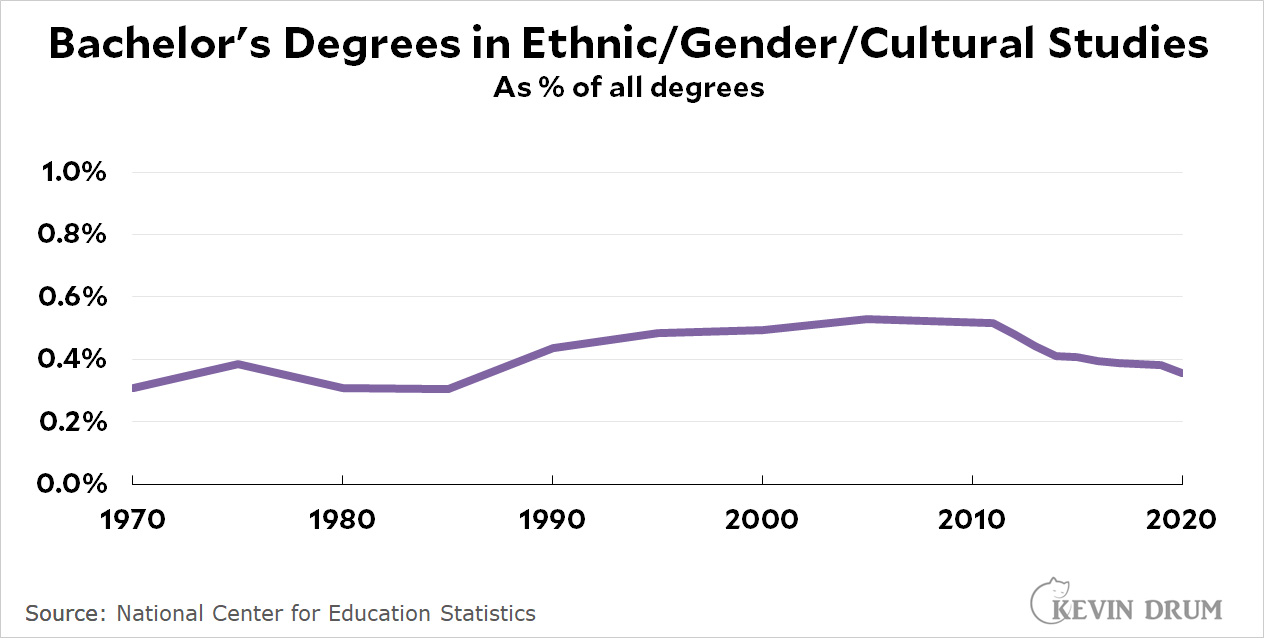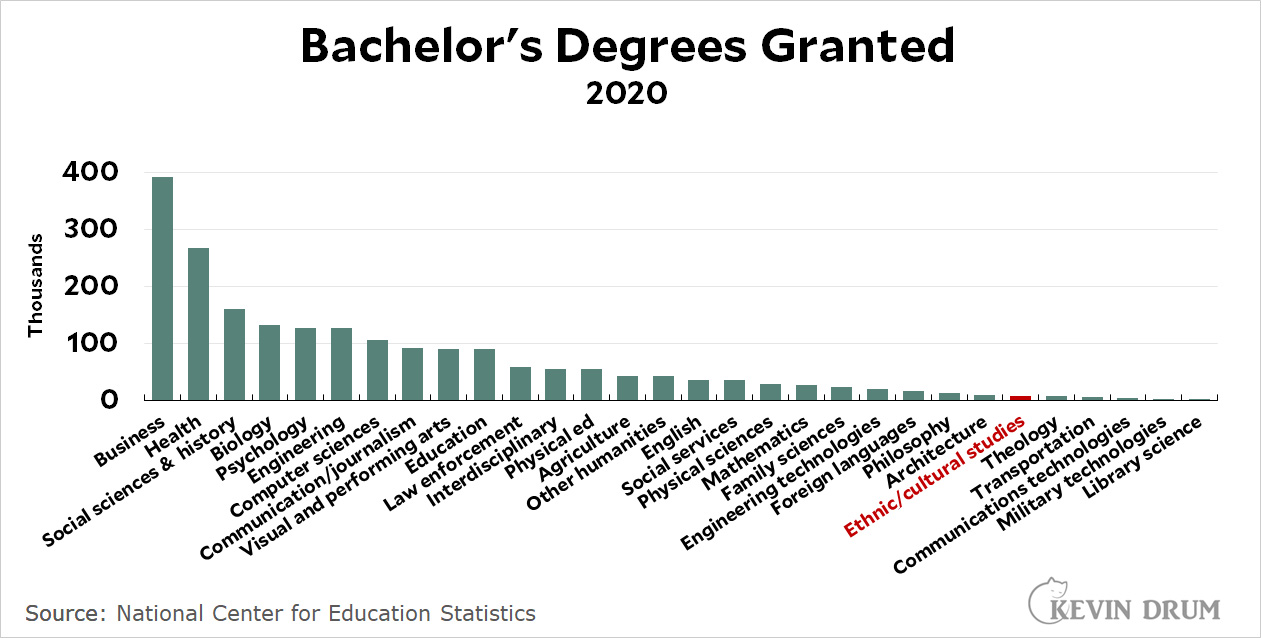Matt Yglesias asks today whether the big rise in murders in 2020 was due to COVID or George Floyd. It's a tricky question: COVID basically started on March 11 and George Floyd was killed on May 25. They're so close together that they're hard to disentangle.
But naturally I thought I'd try. FBI figures don't provide much detail, so instead I went to the CDC and searched vital statistics for all deaths coded as homicides. What I'd like is homicides by date so I could see if they spiked specifically after May 25 as opposed to earlier in the month. I couldn't do that, but I could do this:
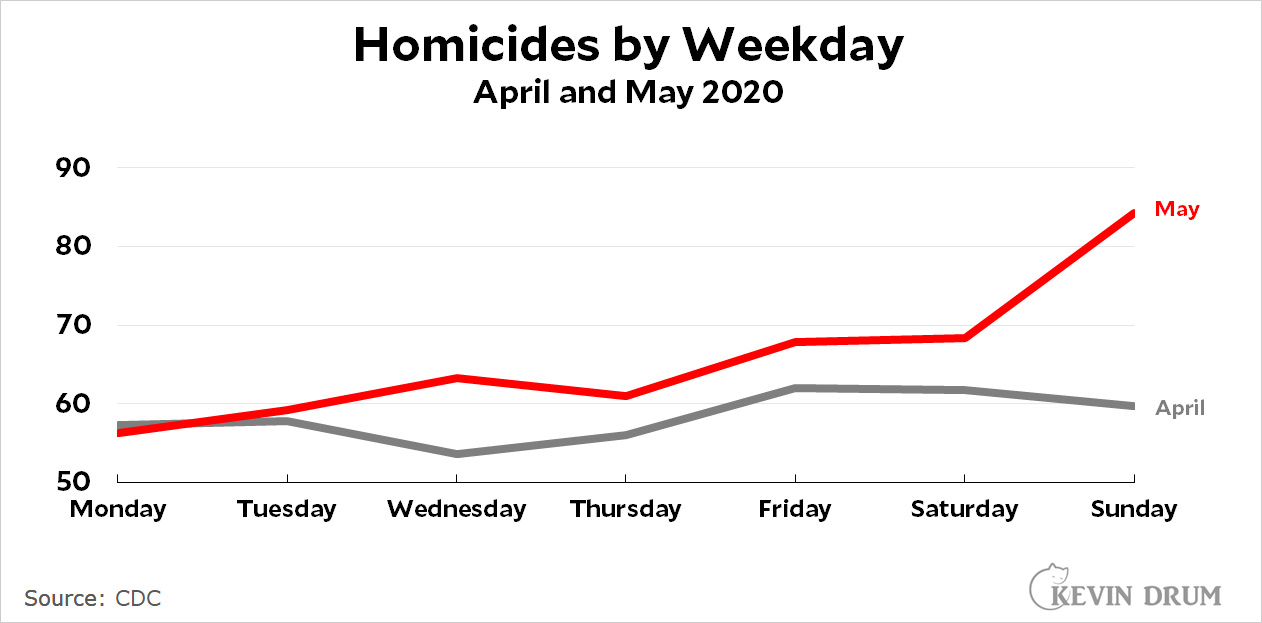 Let me explain. The George Floyd murder happened on Monday the 25th. In May of 2020, homicides ran at the same rate as April on Mondays and Tuesdays. Then they rose a bit, rose a bit more on the weekend, and then spiked much higher on Sunday.
Let me explain. The George Floyd murder happened on Monday the 25th. In May of 2020, homicides ran at the same rate as April on Mondays and Tuesdays. Then they rose a bit, rose a bit more on the weekend, and then spiked much higher on Sunday.
It seems unlikely that this happened throughout the entire month. Why would Monday-Tuesday homicides be the same in April and May but different after that—and especially different on the weekend? More likely, I think, is that these numbers represent a spike beginning specifically on Wednesday, May 27th, and spiking higher on the first weekend after the murder, which raised the monthly aggregate. This suggests Floyd rather than COVID as the reason for the murder spike.
Here's another chart:
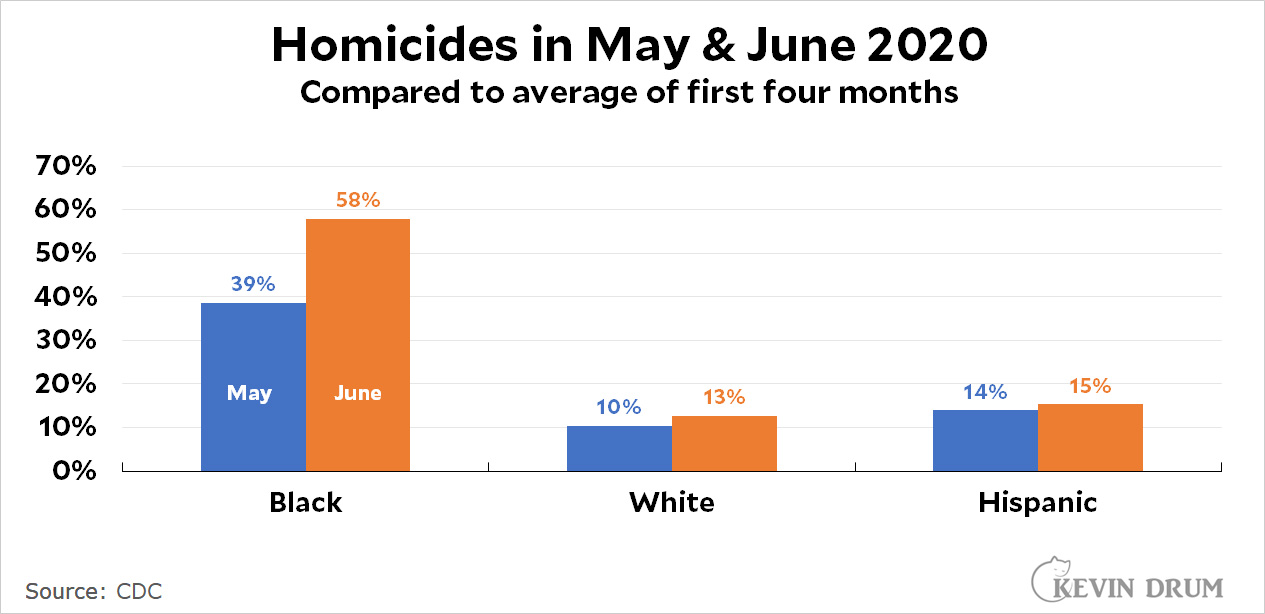 In May 2020, Blacks were killed at a rate 39% higher than the average of the first four months. Whites, by contrast, were killed at a rate only 10% higher. It seems very unlikely that COVID would produce such a large racial difference. Once again, the evidence points to Floyd rather than COVID.
In May 2020, Blacks were killed at a rate 39% higher than the average of the first four months. Whites, by contrast, were killed at a rate only 10% higher. It seems very unlikely that COVID would produce such a large racial difference. Once again, the evidence points to Floyd rather than COVID.
Matt adds another observation: murder went up in the US but, generally, didn't in other countries. This again suggests Floyd rather than COVID as the explanation for a rise in US homicides. And as Matt points out, it's well known that civil unrest often leads to temporarily higher murder rates (the "Ferguson effect"). What was unique about George Floyd was its size: the protests were national; they were big; and they lasted for months.
Did COVID cause the high murder rate to last longer than it otherwise would have? Maybe. I can't think of any way to tell. Does any of this explain why only murder was up, not violent crime in general? Not really. Do we know why civil unrest frequently leads to spikes in murder? Nope. So we still have mysteries.
And of course, my evidence is a little sketchy. It's just the best I could come up with. But sketchy or not, we have four things that all point in the direction of the George Floyd murder being largely responsible for the rise in murders that began in 2020. That's not case closed, but the door is definitely just barely ajar.
UPDATE: A reader points out that the top chart has a problem. In April 2020 there were only four weekend days. In May there were five.
I've updated the chart to show homicides per day for April and May and changed the text to reflect this. It changes things, but the basic picture remains much the same.

